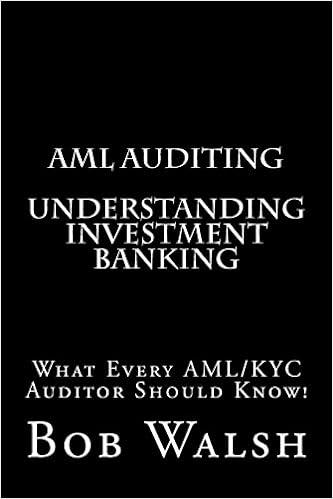Problem 1 : Portfolio Optimisation and Factor Investing Working in a large investment fund as a quantitative analyst, your daily task involves tracking portfolio weights
Problem 1:
Portfolio Optimisation and Factor Investing Working in a large investment fund as a quantitative analyst, your daily task involves tracking portfolio weights of different factor trading strategies that your fund invests in. The factor trading strategies your fund is implementing are value (HML high book to market firms minus low book to market firms), size (SMB Small firms minus big firms), momentum (UMD past winners minus losers), operating profitability (RMW Robust firms minus weak firms) and investments (CMA Conservative firms minus Aggressive firms). The monthly factor returns for 4 trading strategies from July 1963 to December 2020 can be found in equity_strategies.csv as attached. Using the provided strategy returns, complete the following tasks:
1.Report the annualised average return and annualised volatility for each strategy.
2.Report the correlation and covariance matrix.
3.Construct an efficient portfolio EP with a target return of 3%. Report and interpret the weights on each asset. What is the portfolio risk? You need to use and report the Excel Solver steps for this task.
4.Construct the global minimum-variance portfolio GMV. Report the weights on each asset and the portfolio risk and return. You need to use and report Excel Solver for this task.
5.Your fund caters to multiple investors with different risk preferences. Using Excel Solver to complete the following tasks:
a) Low risk portfolio A for the group of investors who requires 2% rate of return. What is the portfolio risk? Is this portfolio efficient/inefficient? Explain why this portfolio is efficient/inefficient.
b) Medium risk portfolio B for the group of investors who targets return at 4%. What is the portfolio risk? What are the weights on individual trading strategies?
c) High risk portfolio C for the group of investors who requires 10% return. What is the portfolio risk? What are the weights on individual trading strategies?
d) Repeat 5)a, 5)b, and 5)c with short sale constraints. Note that Excel Solver might not be able to find a solution.
e) Based on the results from 5a, 5b, 5c and 5d, do you agree/disagree that the mean variance optimisation is a reliable framework? Why? Your answers should tie with theories and practical implementation above.
6. Now you construct the portfolios in 5)a, 5)b, and 5)c, using EP and GMV portfolios constructed in Parts 3) and 4).
a) What is the covariance between EP and GMV? Hint: It depends on the weights on each asset put in to construct each portfolio, risk of each asset, and covariances.
b) What are the weights on EP and GMV to construct portfolios A, B and, C? Are the portfolios created by combining EP and GMV similar to their equivalents in 5a, 5b, and 5c in terms of risk and return?
c) What you just did in Part 6 is simple and in fact you can span the entire efficient frontier using the two efficient portfolios. This mathematical fact was thought to be an insult to investment professionals. Explain conceptually why?
Problem 2: Value Investing
Your boss is increasingly concerned with the publicity given to value investing. More and more people know about this value trading strategy (buy value and sell growth firms), the excess returns will disappear because quantitative investors bid up the price of value stocks to efficient levels. Another reason is that excess returns to value may become less stable as capital flows in and out of value stocks in response to shifting sentiment. Such shifting sentiment may cause the excess return to value to display a pattern of short-term positive autocorrelation (style momentum) and longer-term negative autocorrelation (style reversal). Your boss would like you to find evidence to support/refute his claims. Download the file size_value.csv which contains monthly returns on different size and value portfolios. Complete the following tasks:
1) Plot a one-year moving average of excess returns to small value stocks over small growth stocks (small-high small-low) over the entire period. Compare the behaviour of the plot in two subsamples: Jan 1964 - Dec 1993 and Jan 1994 Dec 2020.
2) Calculate the mean, standard deviation, and Sharpe ratio of the excess return on the market portfolio over the Treasury Bill, and the return on small HML, for each of the two subsamples.
3) Aggregate the small HML return to quarterly data frequency and plot its autocorrelation function out of 12 quarters (3 years) in each of the two subsamples.
4) What do your results suggest about the changing behaviour of value returns in recent years? Do they support your bosss concerns above?
Excel: Your Excel file should include all workings and calculations. Formulas for the calculations should have cell references wherever possible. If you have computed a number incorrectly and just typed that number into the spreadsheet (or typed a formula using numbers when cell references could have been used), you will not receive partial credit for any portion of your computation that is correct. You need to report Excel Solver steps for each optimisation. Please provide written answers in the Excel file.
The excel component can be found on link below:
https://drive.google.com/drive/u/1/my-drive
Step by Step Solution
There are 3 Steps involved in it
Step: 1

See step-by-step solutions with expert insights and AI powered tools for academic success
Step: 2

Step: 3

Ace Your Homework with AI
Get the answers you need in no time with our AI-driven, step-by-step assistance
Get Started


